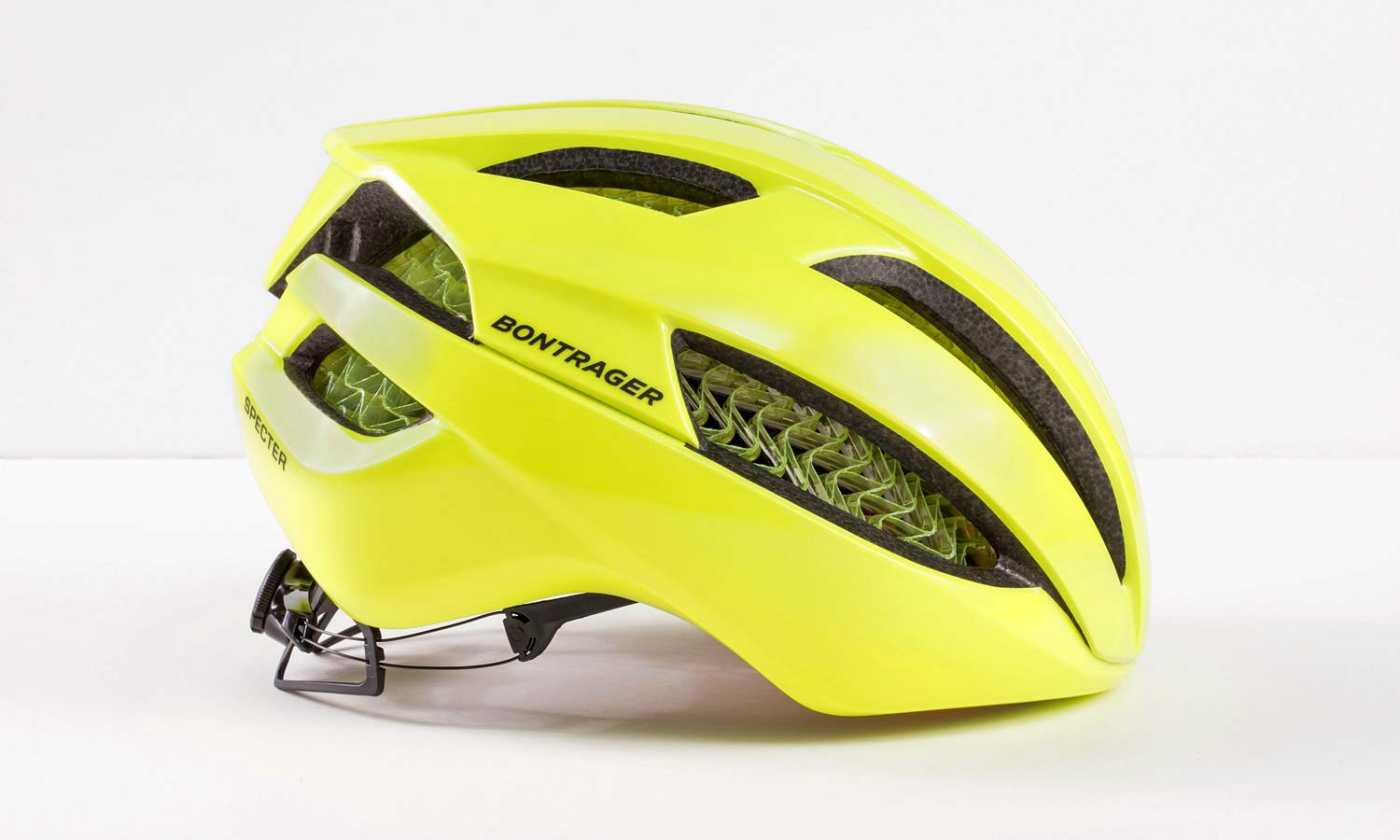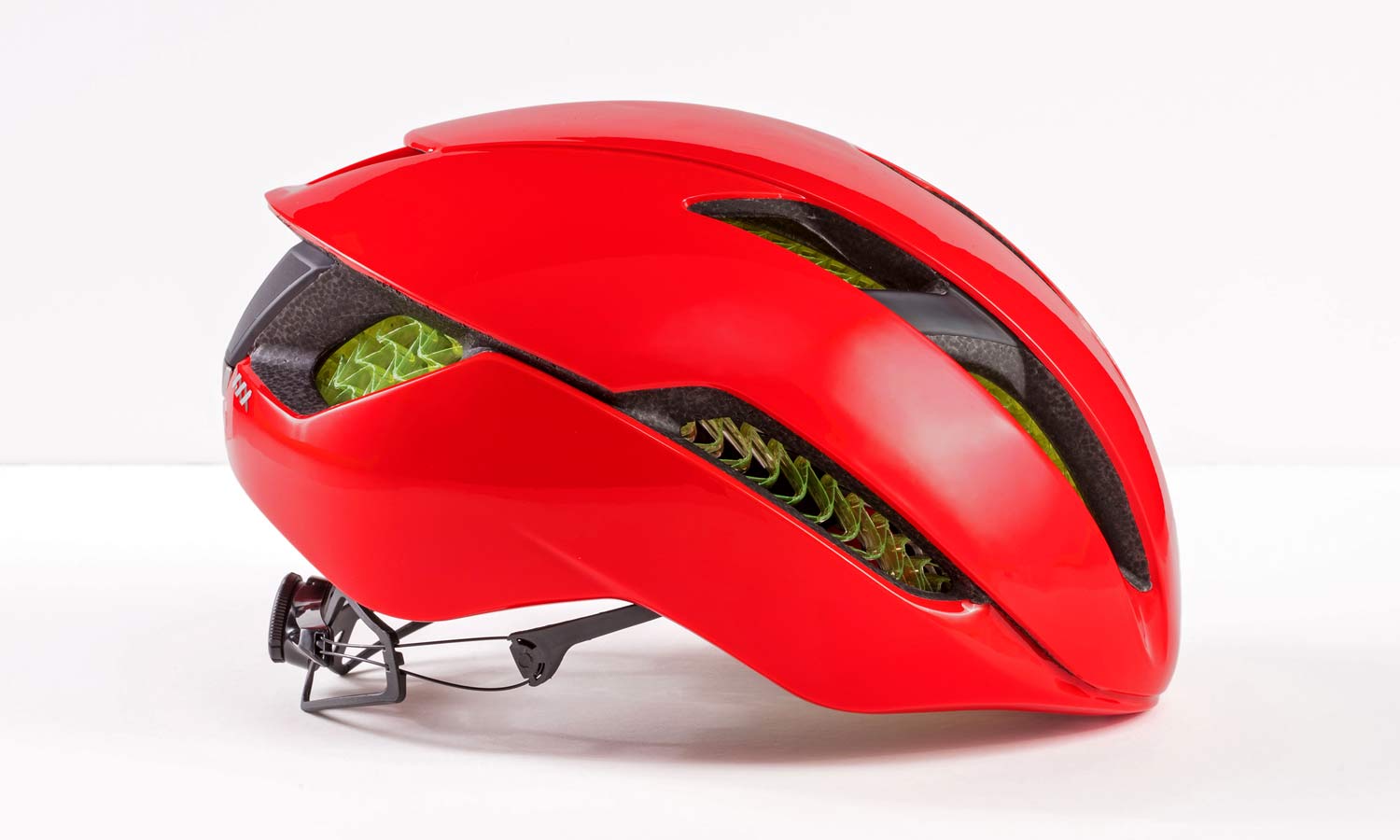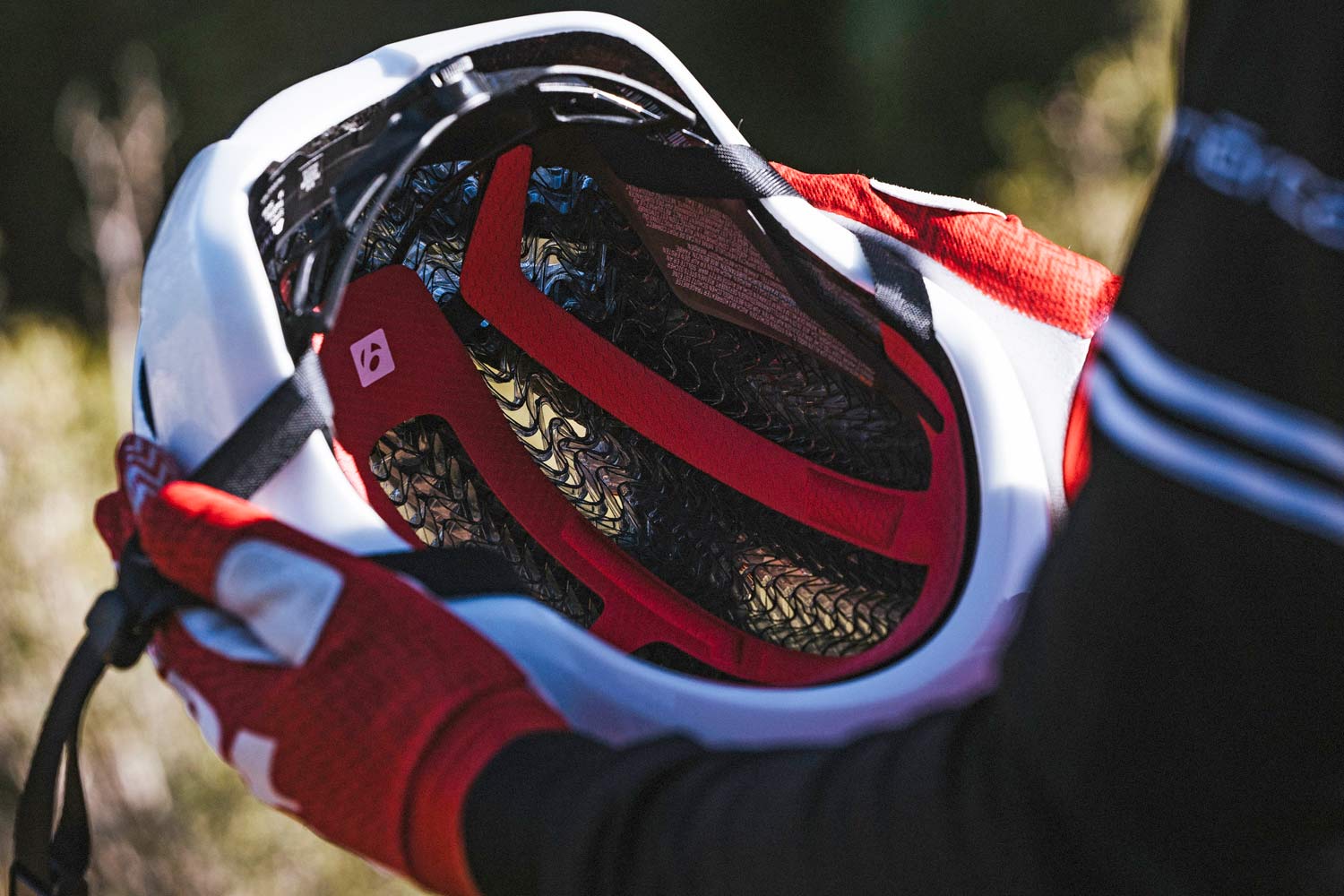Trek and their accessories wing at Bontrager are making bold claims about revolutionizing bike helmet safety with the debut of their new WaveCel crumple zone tech today. Calling it the “biggest advancement to cycling helmets in over 30 years” WaveCel was developed to make cyclists safer with it collapsible internal cellular structure.
Bontrager WaveCel helmet promises safer construction
Trek says WaveCel “works like a crumple zone that absorbs the force of an impact before it reaches your head”. That’s pretty much exactly the role of expanded polystyrene (EPS) foam in a conventional helmet…
So what is so different about the new WaveCel tech?

WaveCel seems to work by making up a grid of cells that continues to offer protection even as it is being compressed in varying directions, and in fact continues to disperse the force of an impact, redirecting it to a greater area of the helmet as it crushes.
That works with a 3-step change in the shape of its boxy grid of cells. As they compress, the cells flex & flatten for the first reduction in force. Then they actually crumple, again absorbing more energy. Lastly, they start to glide to the side, transferring forces to adjacent cells and away from your head until a greater number of cells over a wider area of the helmet act together to absorb the impact.
Plus, the WaveCel helmet doesn’t get rid of the typical in-molded EPS foam shell we have come to know. WaveCel just adds a new, thin liner that disperses energy right before it gets to your head. Think or it something like a lighter weight Koroyd liner oriented to slide around your head, instead of just to offer structure when crumpling under an impact.
WaveCel was developed by doctors seeking to prevent head & body trauma, then developed into this new Bontrager helmet thanks to a four-year development partnership.
Working with the testing lab at Virginia Tech, Trek says the new helmet construction has been demonstrated to be “48 times more effective than standard foam helmets at preventing concussions from common cycling accidents”, those where glancing & twisting impacts are more realistic. “Every model in the all-new Bontrager WaveCel helmet lineup received the highest marks in Virginia Tech’s five-star ranking.”
What Bontrager helmets offer WaveCel protection tech?
WaveCel is exclusively offered in the Bontrager line-up with four different WaveCel helmets available now across different disciplines.
The two most affordable are the new Specter WaveCel road helmet and the Charge WaveCel commuter helmet which both sell for $150.

The Specter WaveCel looks pretty much like any conventional vented road helmet, with the addition of the WaveCels peeking through the large open vents. It features Boa retention, Fidlock magnetic buckle, reflective detailing, and comes in three sizes (341g for size M.)

The Charge WaveCel is a much more closed design with a multi-part in-mold shell & visor completely wrapping the standard EPS liner, and only a small glimpse of the WaveCels through a single continuous vent cut all the way around the helmet. The 428g Charge (M) also gets a Boa dial closure, Fidlock buckle, and includes a rear Blendr mount to attach a taillight.

Stepping up to a more premium lid, the $300 XXX WaveCel road helmet is a more premium vented aero road design, optimized for decreased drag. The XXX is said to be the choice of Trek-Segafredo men & women pros and uses Boa closure, lightweight adjustable straps, with a claimed 352g (M) weight.

The $300 Blaze WaveCel mountain bike helmet is a premium open trail helmet with detachable visor, large open vents, and lower protection over the rear of the head. It also gets Boa closure, a Fidlock buckle, and front Blendr mount to attach a light or GoPro. A size M helmet claims a weight of 420g.
All four new helmets come in a wide range of colors (with different color WaveCels too), and are available now from Trek & Bontrager accessory dealers and online.






